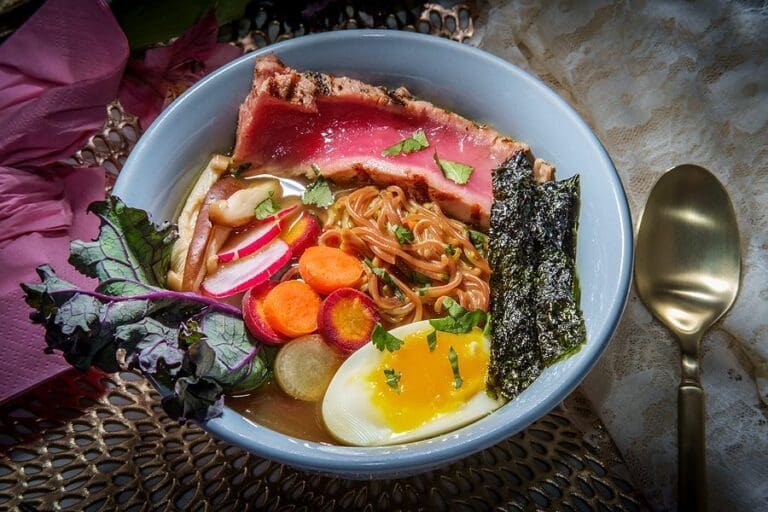It’s the time of year to get out the crystal ball and make a few rash predictions about the coming months!! Over the past few weeks, we have discussed future restaurant trends at the Mise en Place events and listened to other experts give us their views. Many other distinguished groups from around the world have also made a few forecasts.
We all know that running a restaurant is tough. Sadly, it’s not going to get much easier. However, some of the challenges highlighted below offer great opportunities for good operators. Let’s take a look at a few of the more common predictions from a variety of sources*. This is not an exhaustive list and is in no particular order; however, highlights the main trends likely to be seen in Australia over the coming months…
Payroll compliance
 This seems simple, but many venues are still not paying a fair wage or are exploiting current practices. Over the next few months, we will see a crackdown on payroll compliance as well as workplace reviews.
This seems simple, but many venues are still not paying a fair wage or are exploiting current practices. Over the next few months, we will see a crackdown on payroll compliance as well as workplace reviews.
Reduced cash

The cash economy will see more control with “smart tills” and changes in money processing. Overseas examples such as in Belgium, show that the cash economy can be shut down – but with it, many venues will close. And as a result of the crack-down on the cash economy, as well as the younger generations preference for everything electronic, cashless transactions will continue to grow.
Food styles

They will continue to evolve with an emphasis on authenticity, plant-based foods and value.
Plant-based food

Veganism, flexitarian, reducetarian are all established eating styles. Vegetarianism is now mainstream and restaurants and menus need to develop more vegetable-focused dishes, with proteins being the side complement. Even vegetarian tasting menus are quickly becoming the staple in many accredited establishments.
Gut-friendly foods

Fermented foods, gluten-free, probiotics and other dishes designed to improve the health of your gut flora will be prominent as the new “healthy food” trend. Many venues are producing home-grown kombucha in a variety of styles. Some are producing pickles, sauerkraut, kefir, tempeh and kimchi, as well as carrots and other fermented foods. With this trend, the food world is focusing on consuming the least processed food possible while increasing probiotics to improve the immune system.
Sour foods

Sour is the new food flavour trend. Many fermented foods are sour and “sour” hints at “healthy”. Due to the popularity and influence of Korean, Filipino and other Asian cuisines, expect more sour elements on the plate. Kimchi, kombucha, sauerkraut, vinegar-based recipes, marinades & sauces and plenty of tartness from rhubarb, sour oranges, tamarind and pomegranate. Beverages such as Campari, Aperol, negroni, whisky sour, lemon lime and bitters, etc., will grow in popularity.
Alcohol-free beverages
 Particularly amongst the younger health minded guests, alcohol-free beverages are becoming popular. Cold brewed coffee. Distilled non-alcoholic spirits like Seedlip. Non-alcoholic brewed beers. Craft teas. Tea based drinks. And more.
Particularly amongst the younger health minded guests, alcohol-free beverages are becoming popular. Cold brewed coffee. Distilled non-alcoholic spirits like Seedlip. Non-alcoholic brewed beers. Craft teas. Tea based drinks. And more.
Insects and cell-cultured meats

As an alternative protein source, insects such as crickets are becoming more mainstream. Crickets are low in fat, have three times as much protein as beef, exist in large quantities, and can be found everywhere. They can be included in recipes as cricket flour, which is used in breads and pastries and other insect powders that can be used in cocktails. Ants too are gaining interest in food and beverages. The interest in plant-based diets is also seeing a growth in “meat substitutes” including lab-grown meats and related proteins that will change how you see food. Similar to the growth in nut-based “milks”, we may soon see a range of plant-based and lab-grown “meats”.
The dietician

He/she will become the next celebrity chef! The use of mobile apps will provide consumers with access to personal dietary requirements when eating out. Personally-assigned nutrition will become commonplace and a major influence on your diet as we focus more on the science of food.
Share food

It will continue to be big. The younger generations in particular love to share meals and the growth of family style eating to bring people together continue to develop as we seek to connect and regain social contact.
Value

Providing more for less is one of the biggest challenges. Consumers want to pay less but will still not put up with mediocre. As a result, the trend towards convergence & casualisation will continue. People want simpler, cheaper options. And “high end casual” will grow as well – fine dining in more friendly relaxed basic environments, even high-end fast food – “fast fine dining” and affordable luxury.
Farm to table dining

“Paddock to plate” and “farmer to fork” is not new. However, we are all seeking a greater understanding of where our food comes from and the use of local produce. Terroir, the concept of regions and the understanding of food having a sense of place are important. Restaurants are becoming farmers – growing their own foods locally – and farmers are coming closer to restaurants through “regional destinations”, food tourism and community relationships.
Aussie cuisine

As the interest in terroir and regional cuisines grow, we will see more restaurants embracing the Australian cuisine as a style. Gault&Millau defines AussieCuisine to be “A fresh, light, vibrant and innovative cuisine; featuring the diversity of Australian inland and coastal produce and reflecting our relaxed outdoor lifestyle.” As we develop an international presence, Aussie cuisine will become a style as important as French, Italian or Thai cuisine to be celebrated around the world.
Experiential dining

2018 was all about the experience. And this will continue. Diners no longer go out just for the food. Food has shifted from being a service to a destination. As humans, we want to connect: we are sociable animals and we want to be part of the urban village. The element of predictability has gone and the pop up is here to stay. Loyalty comes from the experience, not the product. 7/10 people prefer a cool experience over a cool product. And a genuine human experience is important; otherwise, we can just eat at home.
More people eating at home

Why eat out when there are plenty of reasons to eat in? Home delivery through UberEats, Menulog and others are here to stay. Ghost and virtual restaurants will grow. Given the increasing prices of dining out, more diners will stay home in 2019. The options for delivered restaurant meals and meal replacement from supermarkets will continue to develop. And Millennials are not afraid to cook: meal kits and step-by-step apps have helped develop a revival in home cooking.
“Flex casual”

It is an American trend that will grow in Australia. In order to maximise the use of facilities, venues can be full service at night and counter service by day. Many high-end restaurants have pastry shops, bakeries and fast-food outlets attached to their main venue, selling product from their kitchens. Kitchens can be used as commissaries and “ghost restaurants” at night. Conversely, industrial kitchens, such as those found in hospitals and nursing homes, are being used to support fine dining venues on weekends and different meal periods.
Waste not, want not

Leading on from social responsibility and supporting the hungry, restaurants are finding ways to distribute excess production to charities, reduce waste and find ways to increase sustainable operations. “Nose to tail” dining, reusable and biodegradable packaging and disposables such as “pasta straws” and ways to safely use “leftovers” are being explored. Commercial food waste recycling is common overseas and will grow in Australia.
*Sources: IFE 2019, NRN 2019, NPD Group, Future Food, Forbes, Baum+Whiteman, Wholefoods, Benchmark, Mise en Place.
About the author:
Jeremy Ryland works as a food consultant for Gault&Millau Australia. Ryland is a passionate food professional with a unique combination of scientific, operations and marketing skills. He holds an Honours degree in Food Technology, an MBA in Marketing and a Master of Arts in Gastronomy from Le Cordon Bleu, Academie D’Art Culinaire de Paris.






























